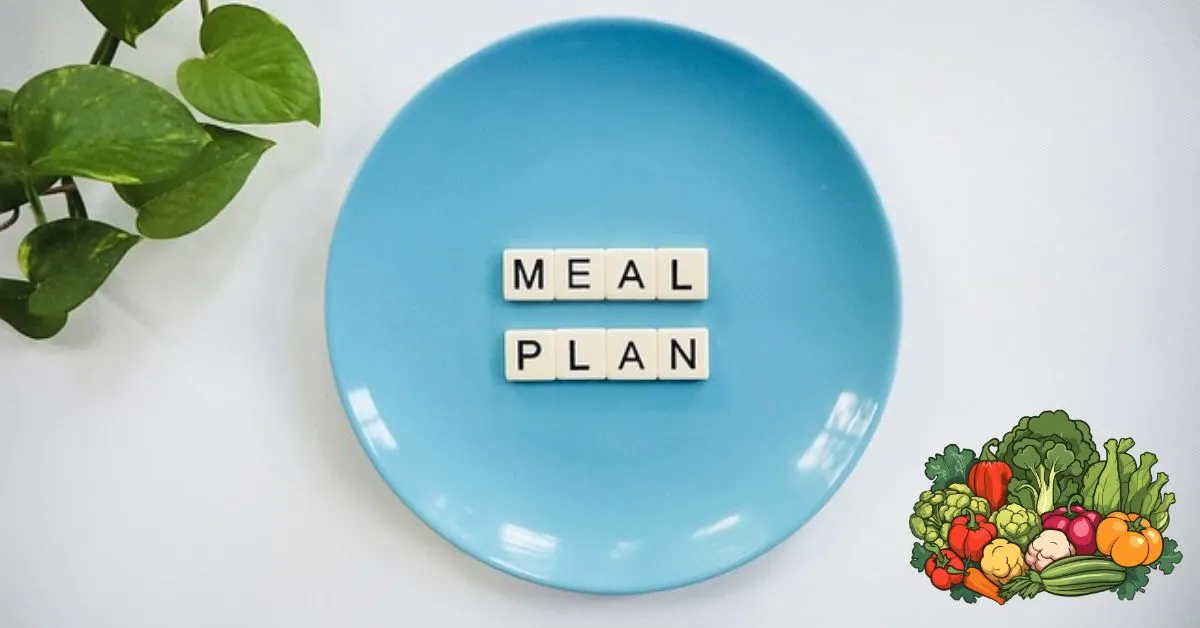Losing weight can be challenging, but a well-organized meal plan can make the journey smoother and more sustainable. A 7-day Meal Prep Plan for weight loss saves time and ensures you stay on track with your calorie and nutrient goals. This guide will provide practical tips, real-world examples, and a step-by-step approach to meal prepping for a healthier lifestyle.

Why Meal Prep Works for Weight Loss
Meal prepping is planning and preparing food earlier to meet your dietary desires. It eliminates the guesswork of consuming healthful, reduces the temptation of grabbing dangerous snacks, and helps control element sizes. According to a look published in the International Journal of Behavioral Nutrition and Physical Activity, meal-making plans are related to advanced eating regimens and better adherence to weight loss desires.
Step 1: Set Your Goals

Before diving into meal prepping, establish clear goals for the week:
- Caloric Intake: Determine your daily calorie needs based on age, weight, gender, activity level, and weight loss target. Use a reliable calorie calculator or consult a dietitian.
- Macronutrient Distribution: Balance your protein, carbohydrates, and fats to ensure adequate nutrition.
- Food Preferences: Consider your likes and dislikes when creating enjoyable meals.
Read more: Meal Prep for Weight Loss
Step 2: Plan Your Menu
Create a menu that aligns with your desires. Here’s an instance of a 7-day meal plan that offers a variety of flavors and nutrients:
Day One:
Breakfast: Overnight oats prepared with almond milk, chia seeds, and pureed berries.
Snack: Hard-boiled egg and a small apple.
Lunch: Grilled fowl breast with quinoa and steamed broccoli.
Snack: Greek yogurt with a handful of nuts and peanuts.
Dinner: Baked salmon with roasted asparagus and candy potato.
Day Two:
Breakfast: Scrambled eggs with spinach and entire-grain toast.
Snack: Baby carrots with hummus.
Lunch: Turkey and avocado wrap with a side of blended vegetables.
Snack: Cottage cheese with pineapple chunks.
Dinner: Stir-fried tofu served with brown rice and a medley of mixed veggies.
Days three-seven:
Repeat variations of the meals above, adjusting elements for range and to use up groceries efficiently. Variety is key to a sustainable meal plan, as it keeps things interesting and ensures you get a wide range of nutrients.
Step 3: Make a Grocery List

Organize your list by food groups:
Proteins: Chicken breast, eggs, tofu, Greek yoghurt, salmon, turkey.
Carbohydrates: Oats, quinoa, brown rice, whole-grain bread, sweet potatoes.
Fruits and Vegetables: Spinach, broccoli, asparagus, carrots, mixed berries, apples, and pineapple.
Healthy Fats: Almonds, chia seeds, avocado, olive oil.
Seasonings and Miscellaneous: Salt, pepper, garlic, hummus, almond milk.
Read more: Chicken and Rice Meal Prep
Step 4: Prep Efficiently
Batch Cooking: Cook large quantities of proteins, grains, and vegetables simultaneously.
Portion Control: Use containers to separate meals into single servings.
Labelling: Label containers with meal names and dates to avoid confusion.
Storage: Use the refrigerator for meals consumed within 3-4 days and freeze the rest.
Real-World Case Study
Sarah’s Journey with Meal Prep
Sarah, a 36-year-old working professional, struggled with weight loss due to her busy schedule. She decided to try a 7-day meal prep plan. Here’s how it worked for her:
- Initial Setup: Sarah calculated her daily caloric need at 1,500 calories to achieve a deficit. She allocated 40% protein, 30% carbs, and 30% fats.
- Menu Creation: Sarah picked meals she loved, including chicken stir-fry and oatmeal bowls.
- Shopping and Prep: She spent Sunday shopping and preparing for the week. Using airtight containers, she stored her meals in the fridge and freezer.
- Results: By the end of the week, Sarah lost 1.5 pounds and reported feeling more energetic. Meal prep helped her avoid impulsive food choices and stick to her plan.
Common Challenges and Solutions
- Time Constraints: Dedicate 2-3 hours on a weekend to prepare weekly food. Consider involving family participants to speed up the procedure.
- Boredom: Rotate recipes weekly and use special spices and sauces to keep food interesting.
- Portion Sizes: Use a kitchen scale to degree quantities as it should be.
Tips for Success
- Stay Flexible: Life occurs; be organized to conform to your plan.
- Hydration: Drink plenty of water at some stage in the day.
- Mindful Eating: Avoid distractions whilst consuming to understand fullness cues.
- Incorporate Movement: Combine meal prepping with ordinary bodily activity for better effects.
Benefits of Meal Prep Beyond Weight Loss
Meal prepping is no longer the most effective aid in weight reduction; however, additionally:
- Saves cash via reducing dining out.
- Promotes more healthy eating conduct.
- Reduces pressure via disposing of each day’s meal decisions.
Tools and Equipment for Meal Prep
- Containers: Invest in BPA-loose, microwave-safe boxes.
- Kitchen Tools: A slow cooker, rice cooker, and satisfactory knives can simplify prepping.
- Apps: Use meal planning apps to organize recipes and music energy.
Final Thoughts
A 7-day meal prep for weight loss is a realistic and effective approach to reaching your fitness dreams. Planning saves time, reduces stress, and stays consistent along with your food plan. Start small, experiment with recipes, and do not forget that consistency is prime. With determination, meal prepping can turn out to be a cornerstone of your weight loss journey.
FAQs
How do you lose 10 lbs in 7 days?
Eat Clean and Light: Stick to lean proteins, lots of veggies, and small portions of carbs. Avoid processed and sugary foods completely.
Stay Hydrated: Drink plenty of water to flush out toxins and reduce bloating. Skip sodas and alcohol entirely.
Move More: Add 30-60 minutes of exercise daily—think walking, jogging, or HIIT workouts. It’ll boost calorie burn fast.
Cut Out Salt: Lower sodium intake to prevent water retention and look leaner quickly.
Sleep Well: Get at least 7 hours of sleep nightly to keep your metabolism in check and avoid eating stress.
Which diet is best for weight loss in 7 days?
Low-Carb Diet: Focus on protein, veggies, and healthy fats while cutting out bread, rice,and sugary foods. It helps shed water weight quickly.
Mediterranean Diet: Eat plenty of fruits, vegetables, fish, and olive oil. It’s balanced and great for quick, healthy weight loss.
Intermittent Fasting: Limit your eating to an 8-hour window and skip late-night snacks to control calorie intake.
Keto Diet: High fat, moderate protein, and very low carbs can help you drop weight fast by burning fat for energy.
Detox or Juice Cleanse: A short-term option to flush out toxins, but ensure it’s packed with nutrients to avoid fatigue.
What is the 30/30/30 rule for weight loss?
The 30/30/30 rule for weight loss means:
Eat 30 grams of protein with every meal to stay full and build muscle.
Do 30 minutes of exercise daily, focusing on strength training or cardio.
Get 30 minutes of movement outside workouts, like walking or stretching, to stay active all day.
